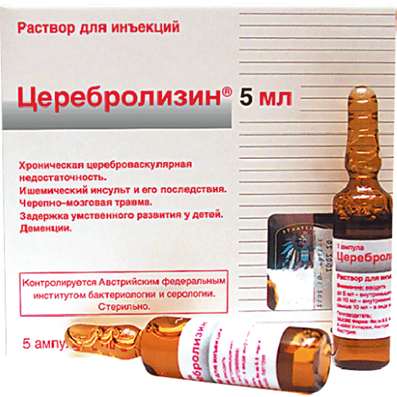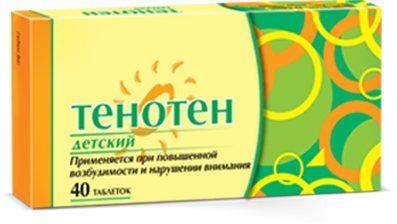Instruction for use: Budesonide (Budesonidum)
I want this, give me price
Pharmacological group
Glucocorticosteroids
Nosological classification (ICD-10)
J30.1 Allergic rhinitis caused by the pollen
hay fever, Hypersensitivity to pollen, Polypoid allergic rhinosinusitis, Seasonal hay fever, rhinitis
J30.2 Other seasonal allergic rhinitis
Allergic rhinitis seasonal, Seasonal rhinitis of an allergic nature
J30.3 Other allergic rhinitis
Allergic rhinitis all year round, Allergic rhinoconjunctivitis
J44 Other chronic obstructive pulmonary disease
Allergic bronchitis, Bronchitis asthma, Asthmatic bronchitis, wheeze bronchitis, Bronchitis is an obstructive, bronchi disease, Shortness of sputum in acute and chronic respiratory diseases, Cough in inflammatory diseases of the lung and bronchus, Reversible airflow obstruction, Reversible obstructive airway disease, Obstructive bronchitis disease, Obstructive lung disease, Obstructive bronchitis, Spastic bronchitis, Chronic lung disease, Chronic nonspecific lung diseases, Chronic obstructive pulmonary disease, Chronic obstructive bronchitis, Chronic obstructive airway disease, Chronic obstructive pulmonary disease, Restrictive lung pathology
J45 Asthma
Asthma physical effort, status asthmaticus, Bronchial asthma, Asthma lung flow, Bronchial asthma with obstruction of sputum discharge, Bronchial asthma heavy currents, Bronchial asthma physical effort, hypersecretory asthma, Hormone-dependent form of bronchial asthma, Relief of asthma attacks in bronchial asthma, Non-allergic asthma, nocturnal asthma, Exacerbation of asthma, Asthma attacks, Endogenous forms of asthma, Night asthma, Cough with bronchial asthma
K50 Crohn's disease [regional enteritis]
Crohn's disease, Crohn's disease with fistula, Granuloma of the intestine, Granulomatous enteritis, Crohn's disease, Regional ileitis, Terminal Ileitis, Enteritis regional
Code CAS51333-22-3
Characteristics
White or almost white powder odorless, virtually insoluble in water and heptane, sparingly soluble in ethanol, readily soluble in chloroform. The octanol / water partition coefficient at pH 7.4 is 1.6 × 103. Molecular weight 430.54.
Pharmacology
Pharmacological action - anti-inflammatory, antiallergic, glucocorticoid.
Glucocorticosteroid with marked glucocorticoid and weak mineralocorticoid activity. In standard in vitro studies (the process or reaction in an artificial medium (in vitro)) and in animal models, it has been shown that the affinity of budesonide to specific receptors of glucocorticoids exceeds that of cortisol by 200 times, and the local anti-inflammatory effect of budesonide is 1000 times higher than that of Cortisol. When studying the systemic activity of budesonide in animal experiments, it was shown that with n / to administration, the effect of budesonide was 40 times stronger than that of cortisol, and 25 times on oral administration.
Oppresses the synthesis of leukotrienes and PG (prostaglandins), inhibits the production of cytokines, prevents the migration and activation of inflammatory cells.
Increases the number of active beta-adrenergic receptors, restores the body's response to beta-adrenergic bronchodilators after long-term use.
Quickly absorbed from the lungs and digestive tract (gastrointestinal tract). With intranasal administration, very little is absorbed from the mucous membrane of the nasal cavity (only 20% enters the systemic circulation). After inhalation, approximately 25% of the dose falls into the alveoli. Got in the gastrointestinal tract (gastrointestinal tract) part almost completely (90%) is destroyed (inactive metabolites are formed) during the "first passage" through the liver. Bioavailability is 10% of the amount entered in the stomach, 25-30% of budesonide absorbed in the alveoli. Cmax in the blood is reached 15-45 min after inhalation and intranasal administration. Binding to plasma proteins is 88%. Has a high system clearance (84 l / h). T1 / 2 from the plasma - 2.8 hours. It is excreted in the urine, in part - with bile in the form of metabolites.
After oral administration, the values of Cmax and Tmax are variable (Tmax in individual patients - from 30 to 600 min). Systemic availability after a single dose is higher in patients with Crohn's disease compared with healthy volunteers (21% and 9%, respectively), but approaches that of healthy volunteers after repeated receptions. About 90% of absorbed budesonide is metabolized by "first passage" through the liver with the participation of microsomal enzymes (mainly CYP3A4 (cytochrome P450 isoenzyme)) to 2 major metabolites - 6-beta-hydroxy-budesonide and 16-alpha hydroxyprednisolone (the glucocorticoid activity of metabolites is less than 1/100 of budesonide activity, of the remaining quantity, about 90% binds to albumin and is in an inactive state.
The effectiveness of budesonide (oral dosage form) is shown in inflammatory bowel diseases, incl. With collagenous colitis.
Intranasal form is effective in the treatment of non-infectious inflammatory processes in the nasal cavity, to prevent the recurrence of polyps in the nasal cavity after surgical removal and complete healing of the mucosa.
Carcinogenicity, mutagenicity, effects on fertility
Potential carcinogenicity of budesonide was evaluated in long-term studies in rats and mice. There was no carcinogenic effect of budesonide in mice with oral administration for 91 weeks at doses up to 200 μg / kg / day (600 μg / m2 / day, about 0.1 MPHP when recalculating to body surface area).
In a two-year study in Sprague-Dawley rats, a statistically significant increase in the incidence of gliomas in male rats receiving a dose of budesonide 50 μg / kg / day (300 μg / m2 / day) was found; Similar changes were not observed in males at doses of 10 and 25 μg / kg / day (60 and 150 μg / m2 / day) and in females at all doses studied. In 2 additional two-year studies, in male Fischer and Sprague-Dawley rats at doses of 50 μg / kg / day (less than MPDT for body surface area), there was no increase in incidence of gliomas compared to other glucocorticoids (prednisolone and triamcinolone). However, against the background of all 3 investigated glucocorticoids, a statistically significant increase in the incidence of hepatocellular tumors in rats was observed.
There were no mutagenic and clastogenic properties of budesonide in a number of standard tests.
At the time of administration of budesonide rats at doses up to 80 mcg / kg / day (less than MPDT when recalculating to body surface area), there was no adverse effect on fertility, but there was a decrease in weight gain in females along with a decrease in viability in the prenatal period, At birth and during the period of feeding. At doses of 5 μg / kg / day (30 μg / m2 / day), no similar effects were noted.
Pregnancy
Like other corticosteroids, budesonide had teratogenic and embryotoxic effects in rabbits and rats. In experimental studies on animals (rats, rabbits) it has been shown that subcutaneous administration of budesonide leads to the development of congenital malformations in the fetus (mainly skeletal defects).
Indications
Inhalation: bronchial asthma, chronic obstructive pulmonary disease.
Inside: Crohn's disease involving the ileum and / or ascending colon (for the induction of remission with mild and moderate forms).
Intranasal: seasonal and year-round allergic rhinitis.
Contraindications
Hypersensitivity, for inhalation use: active form of pulmonary tuberculosis, fungal infections of the respiratory system; For oral administration: infections of the gastrointestinal tract (bacterial, fungal, amoebic, viral), severe liver dysfunction, children's age; For intranasal use: fungal, bacterial and viral infections of the respiratory system, tuberculosis of the respiratory system.
Restrictions
For oral administration: tuberculosis, arterial hypertension, diabetes mellitus, osteoporosis, peptic ulcer, glaucoma, cataract, a burdened family history of diabetes mellitus or glaucoma.
pregnancy and lactation
When pregnancy is possible only if the expected effect of therapy exceeds the potential risk for the fetus (adequate and strictly controlled studies on use during pregnancy are not carried out). Children whose mothers received significant doses of corticosteroids during pregnancy should be closely monitored (hypofunction of the adrenal gland is possible). In women of childbearing age, a possible pregnancy should be ruled out before the start of therapy, and reliable methods of contraception should be used during treatment.
At the time of treatment should stop breastfeeding.
Side effects
At inhalations: a dysphonia, a sore throat, dryness or irritation of an oral cavity or pharynx, cough; Less often - candidiasis of the oral mucosa, nausea, pharyngitis, paradoxical bronchospasm.
When taken orally
From the nervous system and sensory organs: depression, euphoria, irritability, glaucoma, cataract.
From the cardiovascular system and the blood system (hematopoiesis, hemostasis): increased blood pressure, increased risk of thrombosis, vasculitis (withdrawal syndrome after prolonged treatment).
On the part of the digestive tract: pain in the epigastric region, dyspeptic phenomena, duodenal ulcer, pancreatitis.
From the endocrine organs: Cushing's syndrome, incl. Moon face, obesity of the trunk; Diabetes mellitus, decreased glucose tolerance, sodium retention with the formation of edema, hypokalemia, decreased function or atrophy of the adrenal cortex, impaired secretion of sex hormones (amenorrhea, hirsutism, impotence).
From the musculoskeletal system: muscle weakness, osteoporosis, aseptic necrosis of bones (femoral and humeral head).
On the part of the skin: allergic exanthema, red striae, petechiae, ecchymosis, steroid acne, deterioration of wound healing, contact dermatitis.
Other: increased risk of infectious diseases.
With intranasal application: burning, irritation of the nasal mucosa, sneezing, candidomycosis.
Interaction
Inhibitors of cytochrome P450 (including ketoconazole, erythromycin, cyclosporine) can slow down metabolism and enhance the glucocorticoid effect. Budesonide can enhance the action of cardiac glycosides (due to potassium deficiency); Saluretics can increase hypokalemia. Simultaneous administration of cimetidine and budesonide can lead to a slight increase in the level of budesonide in plasma (it has no clinical significance). Omeprazole (with simultaneous administration) does not affect the pharmacokinetics of budesonide.
Interaction
Ketoconazole significantly increases the plasma concentration of budesonide and enhances its glucocorticoid effect. Joint oral administration of ketoconazole and budesonide caused an increase in the systemic effect of budesonide by a factor of 3-8.
So, ketoconazole (in a dose of 200 mg once a day) increased the plasma concentration of budesonide when taken orally (at a dose of 3 mg once a day) on average 6 times. When taking ketoconazole 12 hours after the administration of budesonide, the concentration of the latter in the blood plasma increased by an average of 3 times. Admission of 100 mg of ketoconazole 2 times a day increased the plasma concentration of orally administered budesonide (10 mg once) by an average of 7.8 times.
Information on this interaction with ketoconazole when taking budesonide in the form of inhalation is not available, but it is expected that in this case an increase in the concentration of budesonide in the blood plasma should be expected.
In case of necessity, co-administration of ketoconazole and budesonide should increase the time between the use of drugs to the maximum possible, and consider the possibility of reducing the dose of budesonide.
Because budesonide is metabolized by the CYP3A4 isoenzyme, CYP3A4 inhibitors can slow down its metabolism, increase blood levels and enhance the effect.
Caution should be exercised when using budesonide against long-term treatment with CYP3A4 inhibitors (such as ketoconazole, itraconazole, ritonavir, atazanavir, indinavir, saquinavir, nelfinavir, erythromycin, clarithromycin, telithromycin, etc.).
Overdose
Symptoms of chronic overdose: manifestations of hypercorticism.
Treatment: elimination of budesonide by a gradual dose reduction.
Routes of administration
Inhalation, inside, intranasal.
Precautions
With prolonged use, the development of candidiasis is possible.
Budesonide can suppress the function of the hypothalamic-pituitary-adrenal system. Before the surgery or exposure to another stress factor, additional administration of systemic glucocorticoids is recommended.

 Cart
Cart





